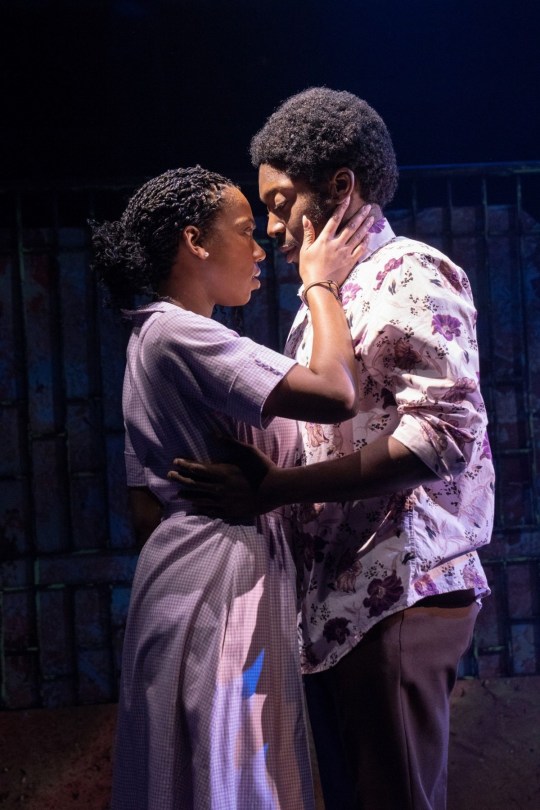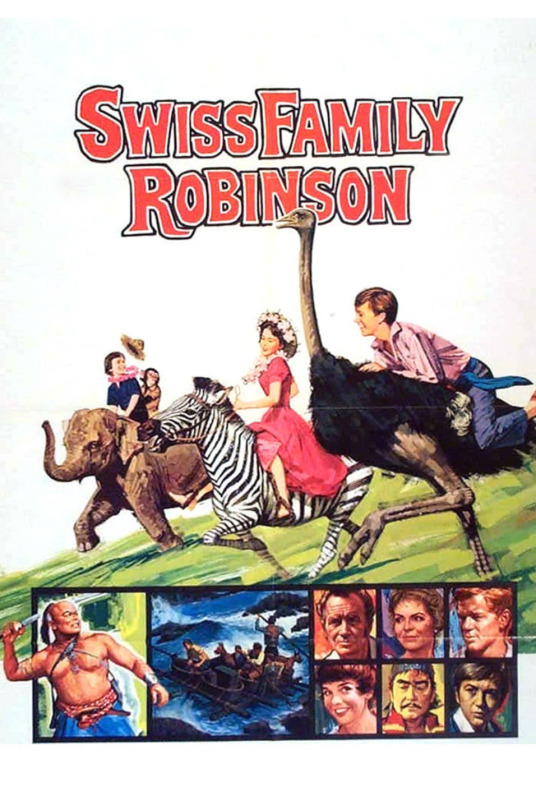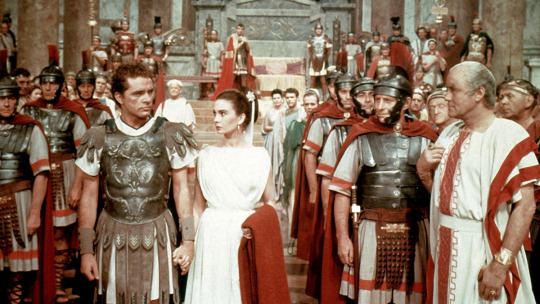#Ken Robinson
Explore tagged Tumblr posts
Text

#condor#tv shows#mgmt plus#todd katzberg#ken robinson#jason smilovic#max irons#kristen hager#bob balaban#illustration#vintage art#alternative movie posters
4 notes
·
View notes
Text







The Harder They Come
Book by Suzan-Lori Parks, songs by Suzan-Lori Parks and Jimmy Cliff
Co-Dir. Sergio Trujillo
Dir. Tony Taccone
The Public Theatre, 2023
Pulitzer Prize-winning playwright and The Public’s Writer-in-Residence, Suzan-Lori Parks, brings to The Public a new musical adaptation of the 1972 movie, THE HARDER THEY COME. Celebrating its 50th anniversary, the breakthrough film, produced and directed by Perry Henzell and co-written with Trevor Rhone, tells the story of Ivan, a young singer who arrives in Kingston, Jamaica, eager to become a star. After falling in love and cutting a record deal with a powerful music mogul, Ivan soon learns that the game is rigged, and as he becomes increasingly defiant, he finds himself in a battle that threatens not only his life, but the very fabric of Jamaican society. (X)
(Photos by Joan Marcus)
#the harder they come#jimmy cliff#natey jones#meecah#j bernard calloway#jeannette bayardelle#chelsea-ann jones#dana marie ingraham#morgan mcghee#housso semon#dundey joseph jr.#shawn bowers#sir brock warren#ken robinson#dominique johnson#andrew clarke#jacob ming-trent
2 notes
·
View notes
Text
The bugaboo of education: our fear of being wrong
Children are not frightened of being wrong. If you are not prepared to be wrong, you'll never come up with anything original. By the time they get to be adults, most kids have lost that capacity. They have become frightened of being wrong. We stigmatize mistakes. We are running national education systems where mistakes are the worse thing you can make. We are educating people out of their creative capacities.
1 note
·
View note
Photo

If you’re not prepared to be wrong ~ @SirKenRobinson
If you’re not prepared to be wrong, you’ll never come up with anything
business, business quotes, Ken Robinson, Ken Robinson quotes #PICTUREQUOTES, #QUOTES
0 notes
Video
youtube
This is one of the first examples of kinetic type that I remember seeing. My social studies teacher showed us this in class back when I was 15 and I vividly remember how powerful it was. The speech is important and has some points I agree with whole-heartedly, but the clever thing is how they only transcribe the statements that stand out and are important. The pictures help shape the idea and drive home each point, and the sentences they write help make the points clearer and more obvious. I also love the handwritten element being both simple in colour and presentation, but also complex in how it fits together.
0 notes
Text

I love this voice cast. From Persona 3 Reload — Anniversary Special | ft. The Voice Cast of S.E.E.S.
#persona 3#aleks le#heather gonzalez#zeno robinson#alejandro sabb#allegra clark#suzie yeung#dawn m. bennett#justine lee#justice slocum#makoto yuki#yukari takeba#junpei iori#akihiko sanada#mitsuru kirijo#fuuka yamagishi#aigis#ken amada#shinjiro aragaki#they even have a koromaru plush to represent best doggo!
16 notes
·
View notes
Text
Incorrect quotes (aka. my brain at 3am)
Me: (screaming, screeching, crying, sobbing, hair pulling, fangirling, etc.) Tadashi: (concerned) Are you okay? Jin: (confused) uh... Hiro: ... Kenji: (not amused) Okay, get up. What's wrong with her? Camilo: ... Wilbur: (trying to run away) Mina: (to everyone) I think you all should ask Siri. Kenji: Mina, no!
P.S: Inspired by this fanart.
Bonus: Me: (whispering) Why are they so handsome?
#abominable#abominablejin#disney#dreamworks#encanto#abominable2019#camilo madrigal#dreamworks abominable#tadashi hamada#big hero 6#hiro hamada#ultraman ken#ken sato#abominable x reader#ultraman rising#emi ultraman#kenji sato#ultraman#mina ultraman#wilbur robinson#meet the robinsons
53 notes
·
View notes
Text

#movies#polls#swiss family robinson#60s movies#ken annakin#john mills#dorothy mcguire#james macarthur#requested#have you seen this movie poll
70 notes
·
View notes
Text


I can't believe Matpat assassinated his handpicked successor like that. The man only did two episodes!
RIP Tom Robinson, 19XX-2024
#I have to know now if Lee's steam icon is literally just his name#or did Ash edit his icon to protect his dignity#I like to believe all of Lee's profiles are just his name#taking that “just Ken” energy a little too far there pal#game theory#film theory#tom robinson#dapper mr tom#forrest lee#matpat#matthew patrick
49 notes
·
View notes
Text

Swiss Family Robinson (1960)
4 notes
·
View notes
Text



Swiss Family Robinson (1960, Ken Annakin)
25/09/2024
#swiss family robinson#1960#Ken Annakin#1812#The Swiss Family Robinson#Johann David Wyss#RKO Pictures#switzerland#Bern#new guinea#napoleonic wars#Alans#tree house#water wheel#asian elephant#Common ostrich#land bridge#Asia#cabin boy#anaconda#zebra#quicksand#booby trap#europe#1940#Edward Ludwig#walt disney
6 notes
·
View notes
Text
I've been ignoring the japanese dub for link click for a while now (I watched the original chinese audio and one season of the english dub) and so I only found out just now that liu xiao has THE natsuki hanae as his va in the japanese dub. wtffff okay maybe I do care about liu xiao then lmao. maybe I will rewatch link click yet again in another language
#mine musings#wdym he has the same va as kaneki ken and vanitas and 9S#also apparently his cn va is hua cheng for the tgcf donghua. unforchies i haven't been paying attention to the donghua#i'll tune in when they adapt the yin yu and quan yizhen backstory#(sorry idk vanitas's last name. vanitas of the blue moon? lol yeah vanitas vnc you know him)#i knew yang tianxiang (lu guang's cn va) from lu jinghe (aka marius von hagen)#(which is interesting bc marius is... so different from lu guang lmao. but ytx is great in any role)#and lu guang's en va (zeno robinson) is sethos from genshin and also en vanitas vnc#and cxs's en va is cyyu (cyno in genshin plus a bunch of other stuff)#omg i'm also just finding out now that cyyu is sae in bllk. wtf#i think i knew this before but erased it from memory lmao. HE'S SAE??#okay anyway yeah. i'm deep diving in voice actors today#point is. they got THE natsuki hanae for jp liu xiao#i feel ill. probably ooc but what if they make him scream in pain. what then#<- sorry that's what i associate natsuki hanae with now#liveblogging link click#edit: oh i just found out tianchen is lyney!!!!
3 notes
·
View notes
Text




4 notes
·
View notes
Text

The Robe (1953)
Henry Koster’s The Robe, distributed by 20th Century Fox, appeared near the beginning of an era where religious epics and sword-and-sandal films became massive box office draws worldwide. Cecil B. DeMille’s Samson and Delilah (1949) and Mervyn LeRoy’s Quo Vadis (1951) had already laid the foundation on which Koster’s film, adapting Lloyd C. Douglas’ novel of the same name, would find its success. Despite The Robe being highly influential in Hollywood and becoming the highest-grossing film of 1953, the likes of DeMille’s The Ten Commandments (1956) and William Wyler’s Ben-Hur (1959) overtook it artistically and financially – no shame there, as those are two far superior films.
So what is The Robe’s claim to movie history beyond its initial theatrical earnings? When The Robe first came to theaters, 20th Century Fox advertised it as the first film ever made in CinemaScope. Created by Fox’s president, Spyros P. Skouras, CinemaScope was a format in which a widescreen camera lens contracted its widescreen shots onto regular 35mm film and, during theatrical projection, another lens would de-contract the image from the 35mm film in order to project a widescreen format. Theaters would only need to make minor, inexpensive modifications to their projectors in order to show a film in true CinemaScope, a 2:55:1 widescreen aspect ratio. Almost all other films were shot in the Academy ratio at the time (1.37:1, close to the 4:3 ratio – think: black bars on the left- and right-hand sides of a widescreen monitor – seen on many older standard computer monitors and televisions). With increasing competition from television, Fox executives believed CinemaScope could be a way to lure audiences back into theaters. Despite this overreaction from Fox’s executives (as well as the other major Hollywood studios), the legacy of CinemaScope’s innovation is still apparent today. Seven decades later, widescreen formats, not the Academy ratio, are the default in film and television.
Walking through the markets of Rome, returning Roman Empire tribune Marcellus Gallio (Richard Burton) reunites with his childhood sweetheart, Diana (Jean Simmons), who is now promised to Marcellus’ rival, Caligula (an always-sneering Jay Robison). Not long after, Marcellus – out of pettiness rather than financial sense – outbids Caligula for the Greek slave, Demetrius (Victor Mature). Marcellus immediately frees Demetrius, but Demetrius thinks of himself as honor-bound to stay by Marcellus. Elsewhere, an incensed Caligula reassigns Marcellus to Palestine – which, to the film’s Roman characters, might as well be the armpit of the Roman Empire. Marcellus and Demetrius go to Jerusalem, where they witness a man named Jesus enter the city, heralded by crowds of Jews greeting him with palms. Several days later, Judean Governor Pontius Pilate (Richard Boone) orders Marcellus to crucify Jesus on Calvary. Marcellus executes the order but, during and after the crucifixion, witnesses and experiences supernatural events. Demetrius, who has become a follower of Jesus during that week, obeys Marcellus when he asks him to fetch Jesus’ robe. The moment Marcellus dons the robe, he suffers something like a seizure. He falls out with Demetrius, and spends the rest of the film reckoning with his conscience over his role in Jesus’ crucifixion.
The film also stars Michael Rennie as Peter, Dean Jagger as Justus, Torin Thatcher as Senator Gallio, and Ernest Thesiger as Emperor Tiberius. Michael Ansara and Donald C. Klune are both uncredited as Judas Iscariot and Jesus, respectively.
The Robe has the misfortune of peaking in the first half. The adapted screenplay from Gina Kaus (1949’s The Red Danube), Albert Maltz (one of the blacklisted Hollywood Ten; 1950’s Broken Arrow), and Philip Dunne (1941’s How Green Was My Valley) is at its most interesting whenever Marcellus and Demetrius find themselves at odds with the other. In the scenes they share together, that happens often. But when Demetrius disappears after their disagreement over Jesus’ robe midway through, the film begins to sag with no foil for Burton to play off of.
For the entirety of this film, Richard Burton’s acting is overwrought. Burton, who had just arrived in Hollywood the year before to star in My Cousin Rachel (1952), is leaning too deeply into his theatrical roots here. His grandiose exclamations, stiff facial acting, and inconsistent line delivery result in a performance that is easily the weakest part of this film (Jean Simmons is also guilty, to a far lesser degree, of these same flaws in her performance). The Robe requires Burton’s Marcellus to undergo a spiritual conversion – becoming an adherent of Jesus despite following orders to crucify him, a developmental arc more dramatic than any other character’s in this film. Burton’s inability to convincingly sell this conversion (the stoic masculine tension, which some will interpret as coded homosexuality, between Burton’s Marcellus and Mature’s Demetrius does not help) weakens the film’s spiritual power.
Instead, it is Mature who is The Robe’s reliable scene-stealer. Mature, at one time likened to a “miniature Johnny Weissmuller”, has the classical Greek physique that, frankly, Burton does not. And in contrast to Burton at this time in their careers, Mature was more capable of a nuanced performance, as evidenced in his roles as Doc Holliday in My Darling Clementine (1946) and Nick Bianco in Kiss of Death (1947). As Demetrius, his soul hardened through his enslavement, there remains hope for a life free from the yoke of the Roman Empire and its callous slave masters. One sees it in his face during Holy Week, culminating with seeing Jesus dying on the cross. His faith is there, too, during a torture scene upon his return to Rome and an encounter with Peter. Amid miracles and cruelties, Mature’s Demetrius is simply the most compelling character of The Robe and the viewer – through Mature’s performance, especially in contrast to those of Jean Simmons and Richard Burton’s – can discern his genuine turn of faith. The Robe’s failure to showcase this inner awakening more believably is the fault of its two central actors and its screenplay; Mature’s performance and Demetrius’ characterization are all that saves the narrative.
One aspect of Christianity that The Robe captures confusingly (and oxymoronically) is the insignificance of Judea and the prominence of early Christianity in Rome in the time immediately following Jesus’ crucifixion. Oftentimes in Biblical epics, Judea is a centerpiece of the Roman Empire when, in truth (and in The Robe), it was a relative backwater. By Caligula’s reign between 37 and 41 CE, Christianity almost certainly would not have had a substantial presence in Rome at that time. So while Caligula would probably see Christianity as a threat, the film’s decision to treat the early Christians as a clear and present danger to his rule and the Roman state religion is the film’s glaring historical inaccuracy. The Robe – the book and the film – muddies the timeline from Jesus’ crucifixion to the film’s final scene in Caligula’s court. The relative suddenness of the Roman Empire seeing the early Christians as a very minor cult into becoming an Empire-wide menace is difficult to reconcile.
With few other post-silent film era Biblical epics as a guide, The Robe helps set the aesthetic of its fellow Biblical epics and sword-and-sandals movies going forward through its costumes and production design. The work of costume designers Charles LeMaire (1950’s All About Eve, 1956’s Carousel) and Emile Santiago (1952’s Androcles and the Lion, 1958’s The Big Country) is resplendent, regardless of either the Roman or Judean setting. Art directors Lyle R. Wheeler (1939’s Gone with the Wind, 1956’s The King and I) and George Davis (All About Eve, 1963’s How the West Was Won) and set decorators Walter M. Scott (All About Eve, 1965’s The Sound of Music) and Paul S. Fox (The King and I, 1963’s Cleopatra) all make full use of the CinemaScope format and color to enliven the scenery – a sumptuous visual treat for the viewer, and, to reiterate, setting a standard that the crew of The Ten Commandments and Ben-Hur both would study and surpass.
Of all of 20th Century Fox contracted stalwarts behind the camera, composer Alfred Newman was the studio’s most important figure. If Fox’s executives needed a composer to craft a score for what they would consider would be their prestige motion picture of the year, Newman – who composed the original 20th Century Fox fanfare and its CinemaScope extension (the extension, which is now inextricable from the fanfare, was first introduced in 1954’s River of No Return) – was almost always their first choice.
youtube
In one of Newman’s finest scores of his career, it is his choral compositions, with incredible help from his longtime choral supervisor Ken Darby, that form the score’s emotive spine. Jesus’ motif, shared between wordless choir and strings, appears almost immediately, in the opening seconds of the “Prelude”. During the many invocations of a Messiah before Jesus’ first physical appearance in The Robe, his motif shifts, changes form, and modulates – imparting not spiritual comfort or devotion, but a mysteriousness and otherworldliness. When Jesus (whose face we never see) first appears in Jerusalem on Palm Sunday, the cue “Passover/Palm Sunday” represents one of the rare juxtapositions of the brass-heavy martial music representing the Roman presence in Judea and Jesus himself. The modulation to a major key at 1:22 in this cue, with festive percussion, also includes one of the only instances of celebratory choral music in the score. Jesus’ motif in “Passover/Palm Sunday”, appears at 2:26 – cementing his (and Christianity’s) association with the cue, and appearing as the only instance in which one might consider this motif triumphant.
Choruses, which Western viewers so often associate in religious movies as angelic musical devices, become mournful in “The Crucifixion” – arguably the standout cue of Newman’s score. Even though one might be well aware of Jesus’ death and can anticipate a turn in the music (starting moments earlier in “The Carriage of the Cross”), it is startling to hear Newman’s composition change so rapidly. But it is in these several minutes depicting Jesus’ final moments that Newman, with modifications to his harmonies and orchestration, transforms Jesus’ motif to evoke its tragic dimensions. It is magnificent scoring from Newman, and this is not even mentioning his wonderful demarcation of Roman and Judean identities through his score.
In a film about faith – how it comforts, destroys, heals, and vexes – one wishes that the characterization of The Robe’s supposed lead characters in Marcellus and Diana could feel more plausible. The film’s final scene, possibly allegorizing of screenwriter Albert Maltz’s travails as a blacklisted figure in Hollywood, is decently powerful, but it needs far more storytelling support from numerous scenes preceding it.
As it is, the film’s expressive power lies within Demetrius and Victor Mature’s performance. So how fortunate that, because Fox also wanted to make a sequel to The Robe even before it finished production, Mature also signed a contract to appear in a sequel. Nine months after The Robe made its theatrical debut, Victor Mature starred in Demetrius and the Gladiators, directed by Delmer Daves and also seeing Michael Rennie and Jay Robinson reprise their roles as Peter and Caligula, respectively. Though it did not top the box office for that year like The Robe did, Demetrius and the Gladiators was a financial boon for Fox.
With Hollywood’s major studios always ready to respond to the box office successes of their rivals, The Robe helped make possible the decade of Biblical and sword-and-sandals epics to come – and the required viewings for many a Sunday School student in the years hence. These films were Studio System Hollywood in full maximalism, adopting human and tactile scales seldom seen today.
Yet outside of churchgoers, The Robe – for its CinemaScope and genre-specific innovations – has seen its standing slip gradually over the years, no thanks to the reputations of better movies of this tradition and, regrettably, decisions to keep 20th Century Fox’s valuable past under lock and key. 20th Century Fox’s refusal to distribute their classic films more often and more widely – before and after the studio’s 2019 takeover by the Walt Disney Company (and post-takeover, I believe the situation is now worse) – is resulting in films like The Robe slip through the proverbial cracks of film history, sights unseen for younger film buffs. That is unfortunate, especially as The Robe, almost incidentally (and no matter my aforementioned criticisms of the work itself), continues to quietly wield, by virtue of being the first CinemaScope film, a remarkable influence over cinema worldwide.
My rating: 6/10
^ Based on my personal imdb rating. My interpretation of that ratings system can be found in the “Ratings system” page on my blog. Half-points are always rounded down.
For more of my reviews tagged “My Movie Odyssey”, check out the tag of the same name on my blog.
#The Robe#Henry Koster#Richard Burton#Jean Simmons#Victor Mature#Michael Rennie#Jay Robinson#Dean Jagger#Torin Thatcher#Richard Boone#Michael Ansara#Leon Shamroy#Alfred Newman#Ken Darby#Charles LeMaire#Emile Santiago#Lyle R. Wheeler#George Davis#TCM#My Movie Odyssey
6 notes
·
View notes
Photo


Films Watched in 2023:
54. The Music Lovers (1971) - Dir. Ken Russell
#The Music Lovers#Ken Russell#Richard Chamberlain#Glenda Jackson#Max Adrian#Kenneth Colley#Christopher Gable#Izabella Telezynska#Maureen Pryor#Sabina Maybelle#Andrew Faulds#Bruce Robinson#Pyotr Ilych Tchaikovsky#Tchaikovsky#Films Watched in 2023#My Edits#My Post
12 notes
·
View notes
Text
Podcast: Anyone But You & Avatar: The Last Airbender
This week on the show, we’re looking at the new Shakespeare-adapted rom-com Anyone But You and the new live-action adaptation of Avatar: The Last Airbender. Listen to find out how they each hold up! Continue reading Podcast: Anyone But You & Avatar: The Last Airbender

View On WordPress
#Albert Kim#Alexandra Shipp#Anyone But You#Avatar#Avatar: The Last Airbender#Bryan Brown#Dallas Liu#Daniel Dae Kim#Darren Barnet#Dermot Mulroney#GaTa#Glen Powell#Gordon Cormier#Hadley Robinson#Ian Ousley#Ilana Wolpert#Ken Leung#Kiawentiio#Michelle Hurd#Paul Sun-Hyung Lee#Rachel Griffiths#Sydney Sweeney#Will Gluck
3 notes
·
View notes